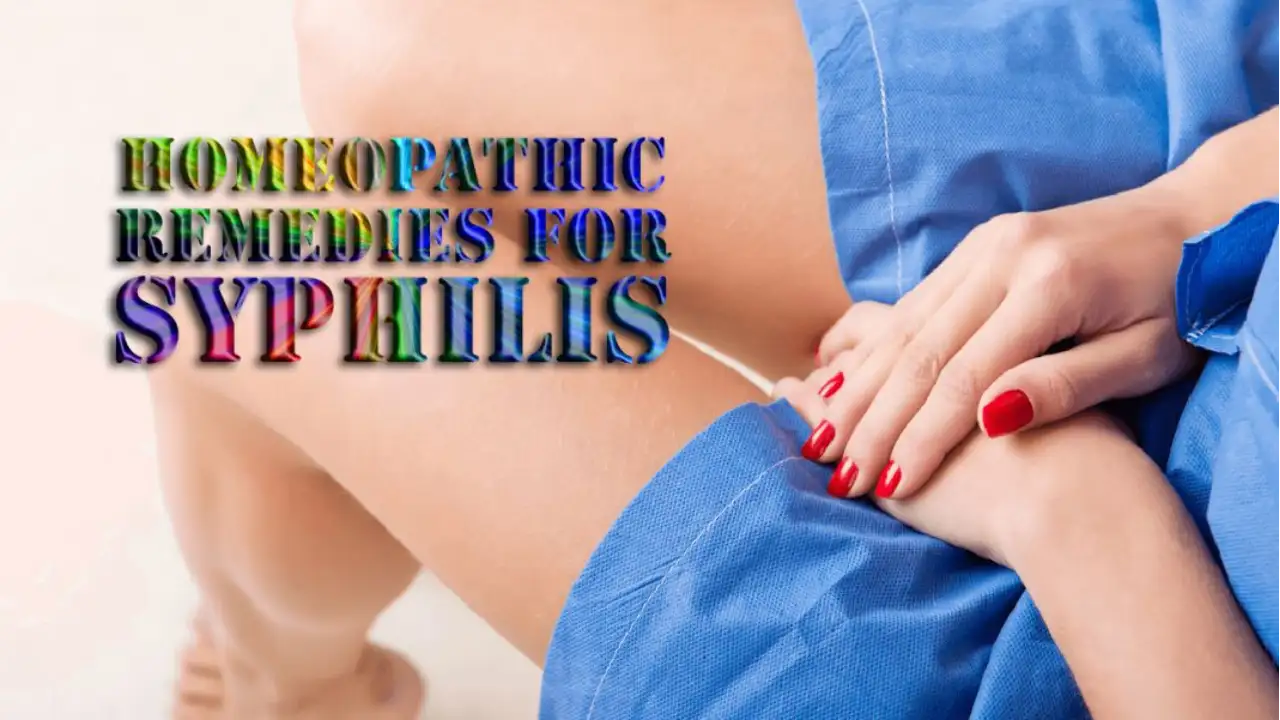Homeopathic Remedies for Syphilis
Syphilis
Syphilis is called venereal disease; because it is in most cases, the result of impure coitus. It is important to grasp three facts at the very outset.
- The syphilis is highly communicable from one individual to another by mere contact and also from parents to offsprings.
This communicability holds good in the primary and secondary stages. - That syphilis is produced by other means than coitus in the usual way. A surgeon or a dresser carelessly handling a syphilitic, may inadvertently transfer the disease to healthy individuals.
- That all sores on the penis are not necessarily syphilitic.
The usual history of an attack of syphilis is this—
A man co-habits with a woman who has syphilitic sore inside her genitals. During the act of coition, he may abrase his penis and this abrasion, visible or invisible, does not occasion any trouble at the time. For 2 to 4 weeks nothing unusual occurs; this period of 2 to 4 weeks from the date of co-habitation is called Primary Incubation Period. At the end of this period and at the spot where the abrasion took place during coitus, a painless, hard and single pimple appears; gradually its top erodes and it looks like a crater with hard raised margins. This is the Primary sore or Hard or Hunterian chancre, and with its appearance, the glands in the groin become enlarged and tender but seldom ever suppurate. Headache and slow fever commence. The sore lasts nearly 2 to 6 weeks and often heals up itself, causing simultaneous subsidence of the glandular inflammation (bubo). From the appearance of the hard chancre to its cure is the Primary stage of syphilis.
At the end of three to four months of this stage, begins the Secondary stage. The period elapsing between the subsidence of the primary stage and appearance of that of the secondary stage is called Incubation Period. It is in this dreaded secondary stage that syphilis is communicable pre-eminently and we find fever, sore-throat, enlarged glands, falling off of hairs, pain in joints, Tumors of testicles, sores on toes, warts, deep eye trouble (iritis), and various skin-eruptions coming out. Miscarriage and painful swellings on bones (nodes) occur in this stage. A patient may have no further trouble after this and may go through the rest of his life comfortably. But what usually happens after a variable latent period of 20 years or more, is The Tertiary Stage.
In this stage, deep seated brain and spinal-cord troubles and deep-seated eye-troubles come on—bringing on paralysis and blindness. Deep bone-troubles and soft growths (gummata) occur during this stage. Skin-eruptions, deep-seated throat or mouth-troubles often appear too.
To sum up, we find in succession—
- Initial abrasion (not troublesome).
- Primary Incubation Period 2 to 4 weeks.
- Primary Sore Hard chancre and Bubo.
- Secondary Incubation Period 3 to 4 months.
- Secondary stage Chiefly skin-eruptions.
- Tertiary Incubation or Latent Period: one to several years.
- Tertiary Stage Deep-seated nervous troubles,
Remember in This Connection
- that the cause of Syphilis is a very minute germ called Spirochete Pallida ;
- that by the time the primary sore (hard chancre) has appeared, the syphilitic poison is well established in the system and whether the chancre cures or not, does not matter much so far as the spread of the poison in the system is concerned;
- that though in common parlance one speaks of “mercurial eruptions” while referring to syphilitic troubles, it is an absolute misnomer and a blind hypothesis, is as much as mercury never causes any eruption of any kind:
- that Syphilis is practically an incurable disease; all that can be claimed is that patients may be rendered practically free from all its troubles and can marry with some amount of safety; and
- that the Wasserman Reaction, so difficult of obtaining because of its being so delicate, affords only a rough working basis for determining whether or not there is any active manifestation of the spirochete.
Let us here emphasize with all honesty that we possess, that the blood of human society shall be upon the head of that practitioner who contributes to perpetuation of the disease by his wrong or supposedly right method of cure.
Treatment
Mercury is the true antidote in all stages. Use Merc. Sol. 6, regularly from the appearence of the chancre. If the disease is rather of a severe type use instead, Merc. Proto lod. 2x. In the tertiary stage, Kali Iod. (gr. 5 to 30 per dose, thrice daily) is better. In all the stages use Syphilinum 200 (m. 1) once every 3 months, suspending all medicines two days before and after its use.
The following accessory medicines may also be used: — In glandular troubles, bubo, etc.—Phytolacca 3. In purulent skin eruptions—Graphites 6. In copper coloured eruptions— Sulphur 6. In much purulent secretions—Silicea 30. In acrid discharges—Ars. 6. In Chronic affections of bone or nose or breaking down of the nasal bone—Aurum Met. 6. In sores that cause too much destruction of tissues (phagedenic sores) or where mercury has been over used; Acid Nitric 6. In effection growths (cauliflower excrescences): Thuja 6. In effection of bone and gums due to sypilitic poison or to mercury: Hepar Sulphur 6-30. In nocturnal aggravations of pain in bones (which is very characteristic of syphilis): Mezereum 6. In eye-troubles: Cinnabaris 3x (trit.). In rheumatism Kali Iod. Ө-30, Phytolacca 3.
Sores and ulcers must be dressed with Calendula lotion or decoction of neem-leaves. Glands, etc. may be poulticed when they threaten to mature. Alcohol, night-keeping, etc. should be given up. Baths may be encouraged and oral cleanliness must be insisted on.
Preventive Measures: Prof. Osier recommends the use of “Calomel-ointment” before and after impure coitus.

Comments are closed.